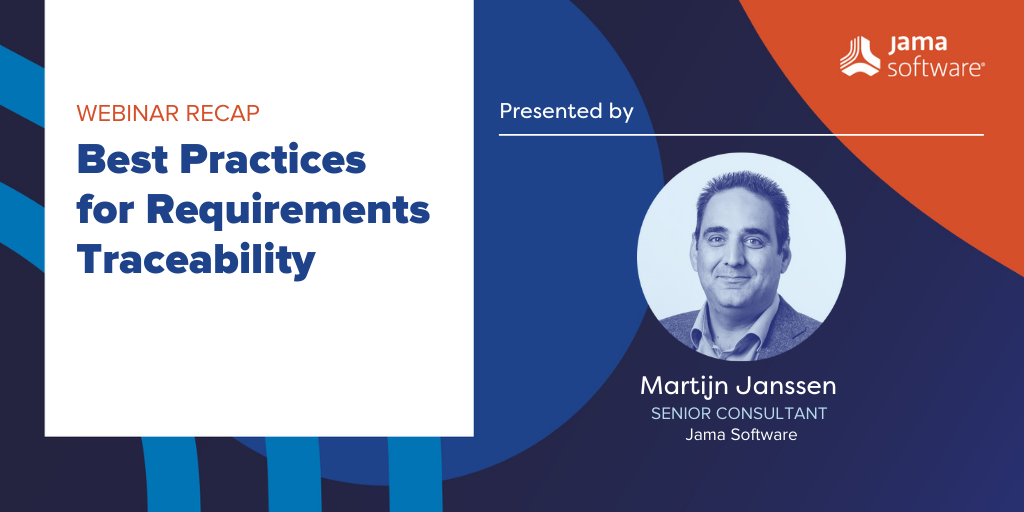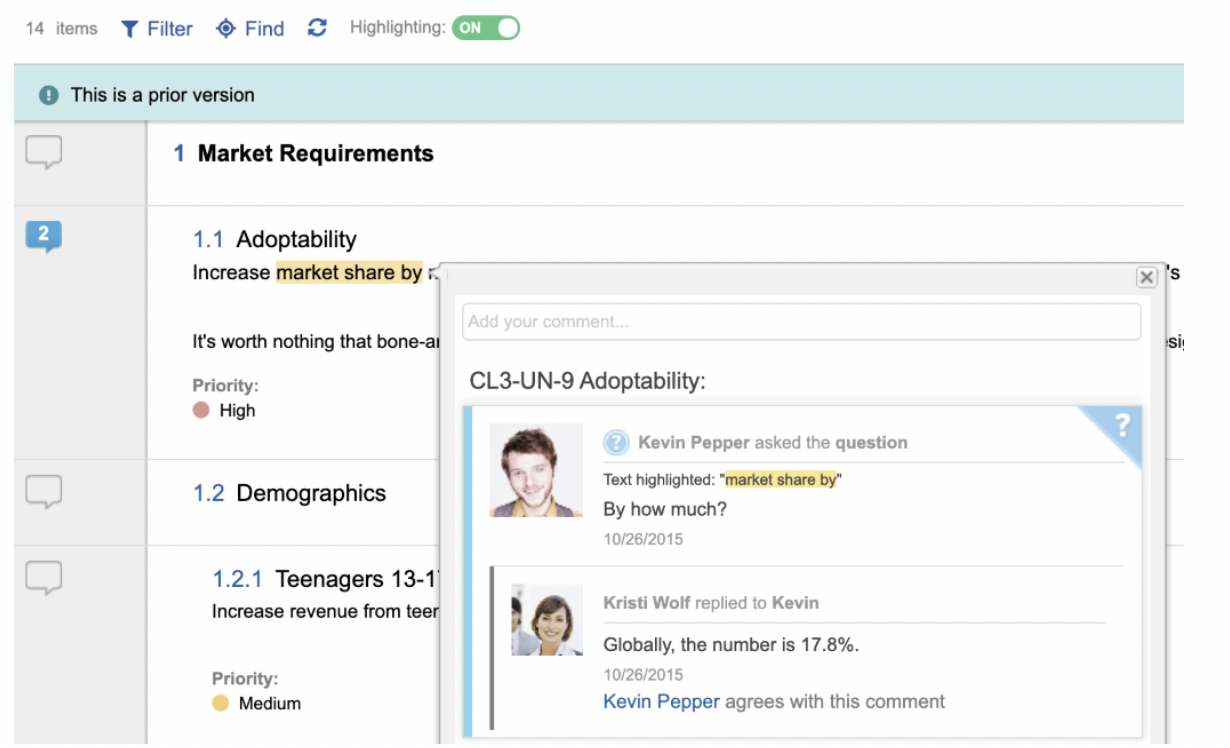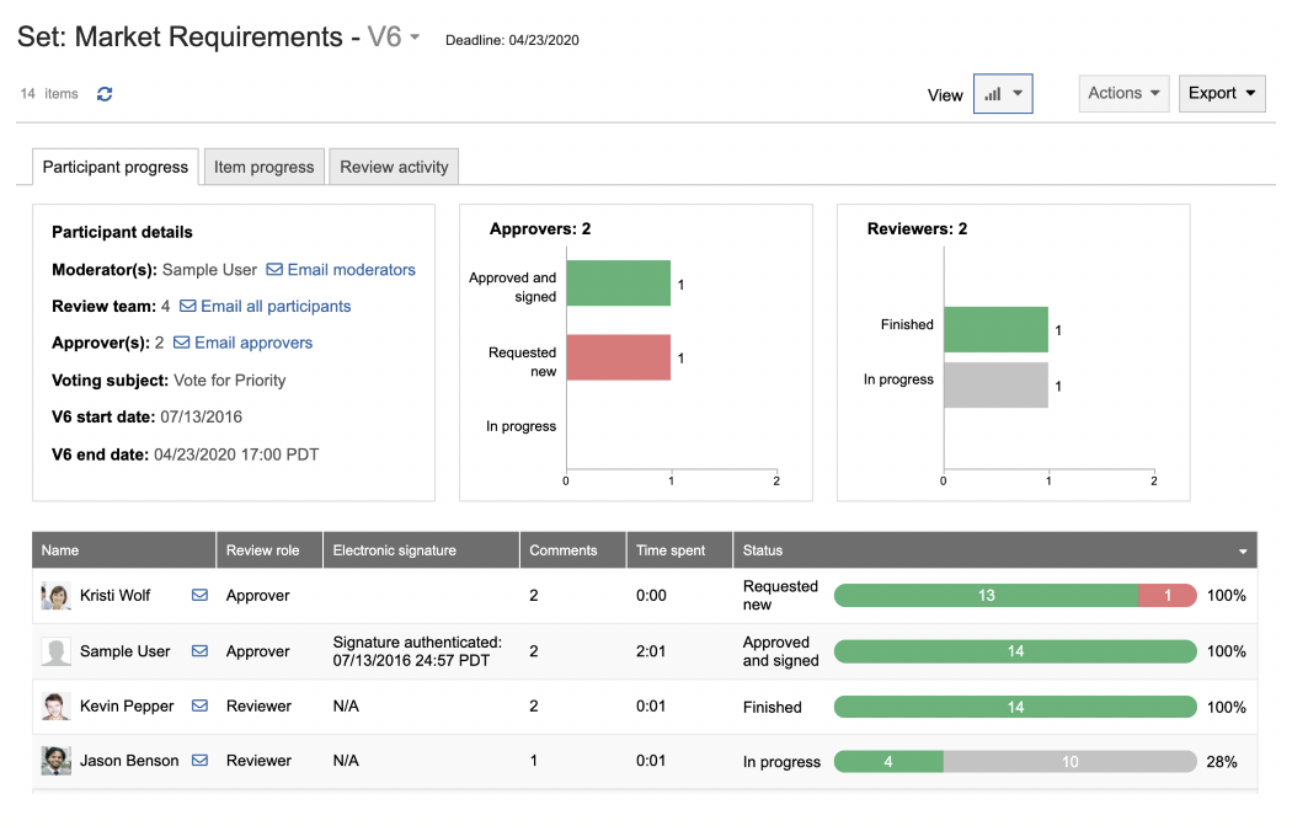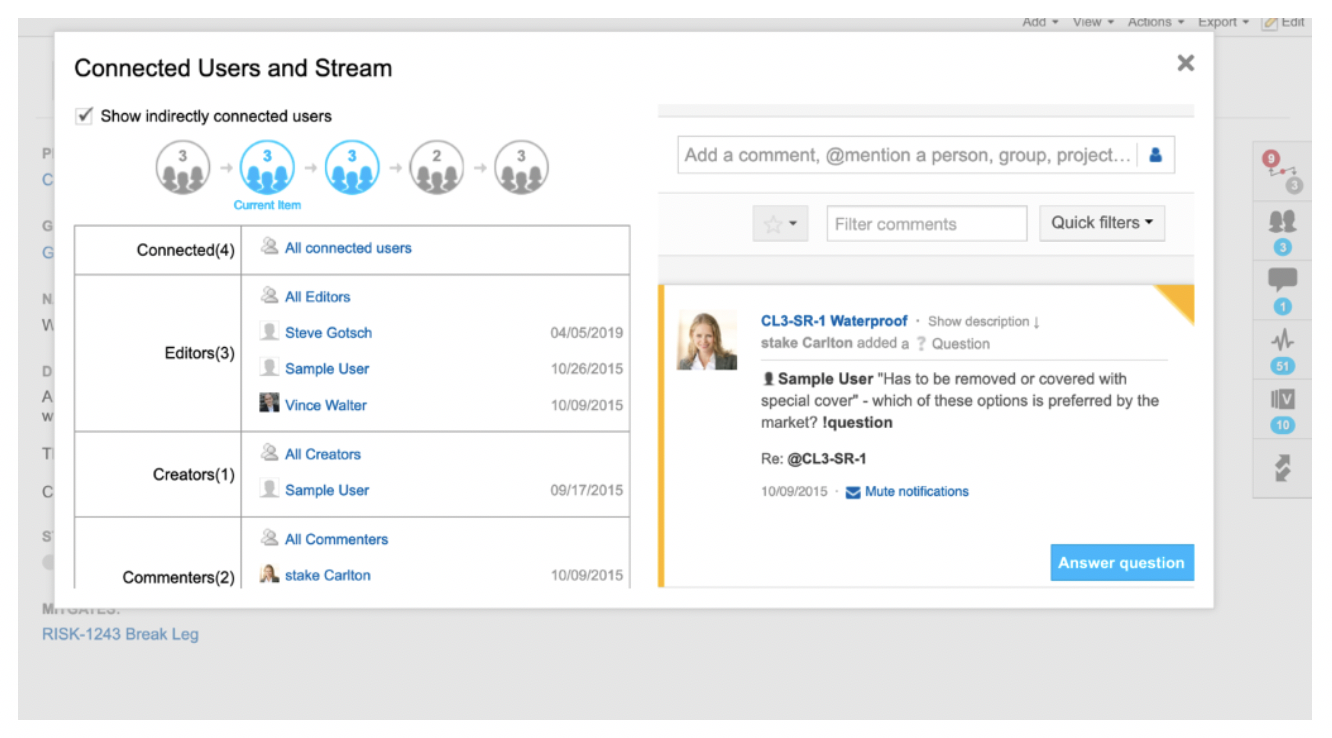In this post, we recap a recent webinar hosted by Jama Software on the topic of requirements traceability.
As the product and software development process grows in complexity, with more and more teams adding information, it is becoming increasingly difficult to track requirements throughout the development lifecycle and for stakeholders to get a clear view. Every decision can have an impact on the requirement or the product itself.
How do you prevent your organization from wasting time and resources, repeating research and searching for information, and how do you ensure that final deliverables tie in directly to the initial business needs?
That’s where requirements traceability becomes very important.
In this webinar, we walk through the challenges of requirements traceability and how you can utilize Jama Connect to overcome them. Watch the webinar to see how to provide backward and forward visibility for requirements, but also other information about the product you are building. You will also see how easy it is to do an impact analysis, to generate reports, and get an overview of how your requirements tie together.
Read the abbreviated transcript below or watch the recording to learn more about:
- Best practices for requirements traceability in a modern solution
- The easy and intuitive way you link your information in Jama Connect
- How Jama Connect can be leveraged to help with impact analysis
- Understanding suspects and traceability views
Martijn Jansson: When we talk about capturing data, we all know data in our organizations in different forms exist, so we have documents, and we have Excel sheets, and those Excel sheets contain rows and all those rows have the data around a certain requirement on a certain topic. Now, that’s all fine, but what we actually are after, what we really want from the system is information. Information gets created by building relationships and structure around those data assets in the system. When you do that, you basically empower your users and the ecosystem around you to find that information and to go along the relationship you build to get context on the data they are looking at.
Now, you can go a step higher with that, and that would be the top of the triangle is the knowledge part. The knowledge part means that you actually have to consider capturing the decision on the change you do on the information. We’ll touch you a little bit on that today, but that’s also in part a possibility in the Jama Connect.
The benefits of getting that information related, as I stated, you can trace those relations back to get to the source of where your data started, what was the first part that you actually started off from, what was the decision point, where did you start with capturing that requirement? Also, at a higher level, you can have an overview of what will happen when you change that specific part of information or piece of information. What will the ripple down effect be when I start changing that specific part?
And then on the learning part on the actual knowledge part, you want to capture the why of a change, so why did we change it? If you go back in time and you look at those changes, you can actually find back why you made the change and why you decided to, for instance, have a status changed or a requirement changed.
RELATED: G2 Names Jama Connect® the Leader in Requirements Management Software
And of course, you do not do that in your own ecosystem. You have many, many connections around you that have input on those decisions and have input on those connections, so engineering partners, customers, other departments within the company can be invited to take part in that process. We’ll take a look at that a little bit later on.
So, in the Jama Connect solution, we will take a look at the first part for data to information, so how do we actually relate information together and what is involved in building those relationships. And when I have them, what leverage, what value can and benefits can I get out of those relationships and what kind of overview do they give me? Now then, on the question part, we’ll take a little look as well on all the different areas where Jama Connect allows you to collaborate and to capture decisions and information on the changes you make during the process of building up your requirement.
Why would we do all these exercises in the system? What is the underlying question? There’s a number of questions we get on a daily basis from our customers when it comes to traceability, so questions like, did we miss anything? Are we building a product that is still complying to what we originally set out to do? What was the original requirement? Where do we start off from? Do we have everything covered when it comes to the validation or the actual testing of parts? The embracing change is something that a lot of customers are on different levels when it comes to how they approach change, but when you look at change, and actually before you do the change, you can see what will happen if you do change that item and what will happen if you start editing the information you have at the top level or at a medium level, it gives you a lot more insight into what will happen and what will the impact be for the organization. So, change becomes a bit more, let’s say, easier to look at and to decide what you want to do.
Then lastly, the validation part is one I highlighted. When I have all these items and places, information and plans, how can I go back and say, “Okay, I have everything validated. I have everything verified. I’m compliant to standards internally or external standards or processes that we set out to comply to.”
Watch the full webinar to learn more about best practices for requirements traceability.














 “Our main performance measurement is the repeat business we receive from our customers. They don’t come back if we’re not meeting the schedule and project budget. And these are things that Jama helps us do,” says Dave Strandberg, Director of Engineering Solutions.
“Our main performance measurement is the repeat business we receive from our customers. They don’t come back if we’re not meeting the schedule and project budget. And these are things that Jama helps us do,” says Dave Strandberg, Director of Engineering Solutions.


